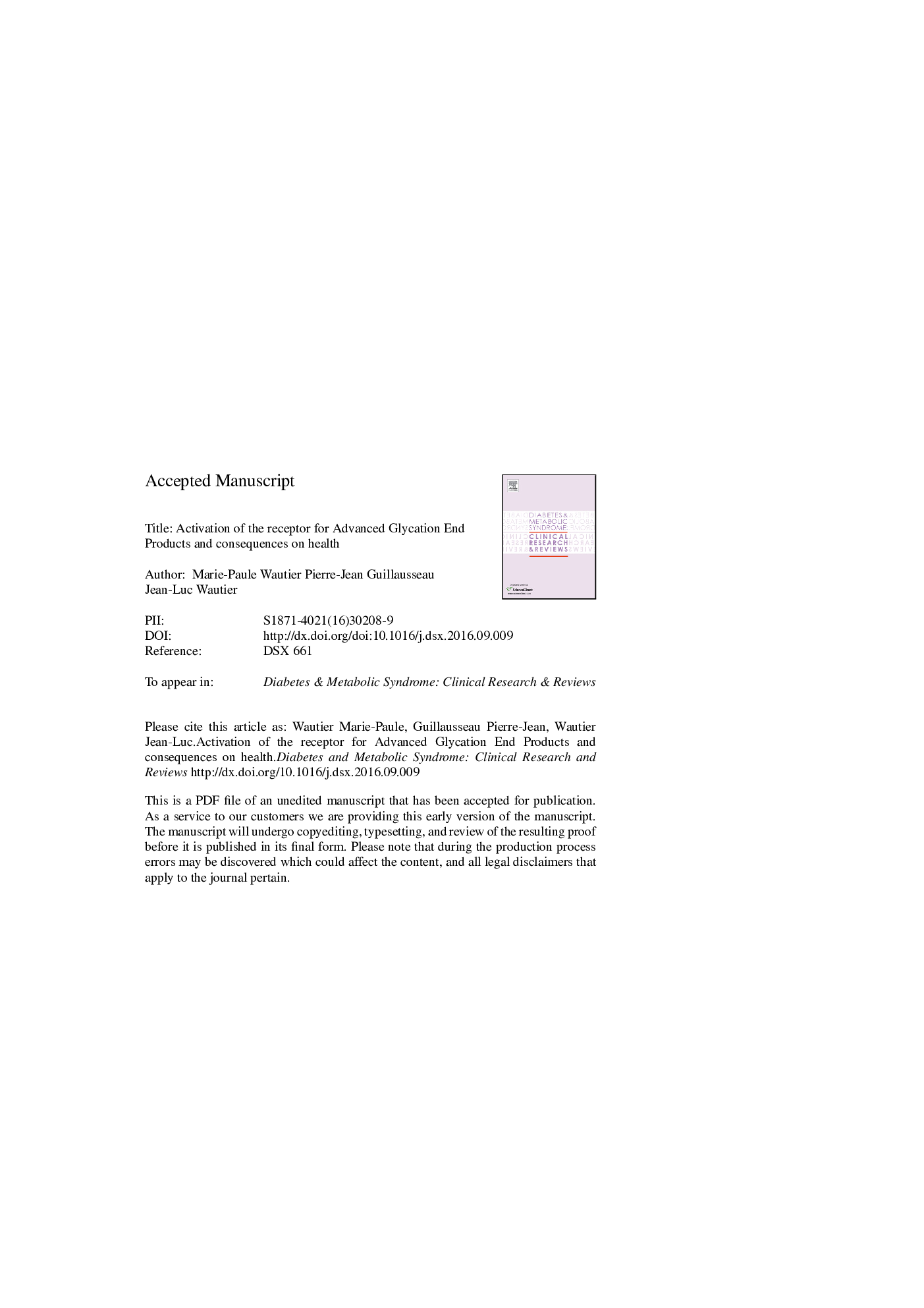| Article ID | Journal | Published Year | Pages | File Type |
|---|---|---|---|---|
| 5601681 | Diabetes & Metabolic Syndrome: Clinical Research & Reviews | 2017 | 17 Pages |
Abstract
Advanced glycation end products (AGE) resulted from a reaction between free amino group of proteins and carbohydrates. This reaction is followed by oxidation and molecular rearrangement. Alternatively AGEs can be produced by glycolysis and oxidation. AGEs bind to a cellular receptor RAGE. RAGE engagement by ligands AGE, β-amyloid peptide, and S100 calgranulin induces a stimulation of NADPH oxidase, reactive oxygen intermediate formation, NFκB activation and gene transcription. This cascade of reaction leads to an inflammatory reaction responsible for alteration of microvessels in the retina and the kidney. Blockade of RAGE by antibodies anti-RAGE, TTP488 (azeliragon), or rRAGE prevents or limits the deleterious effect of AGEs.
Related Topics
Health Sciences
Medicine and Dentistry
Cardiology and Cardiovascular Medicine
Authors
Marie-Paule Wautier, Pierre-Jean Guillausseau, Jean-Luc Wautier,
